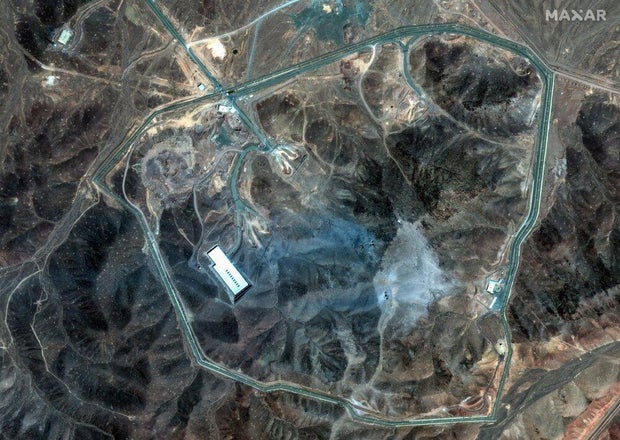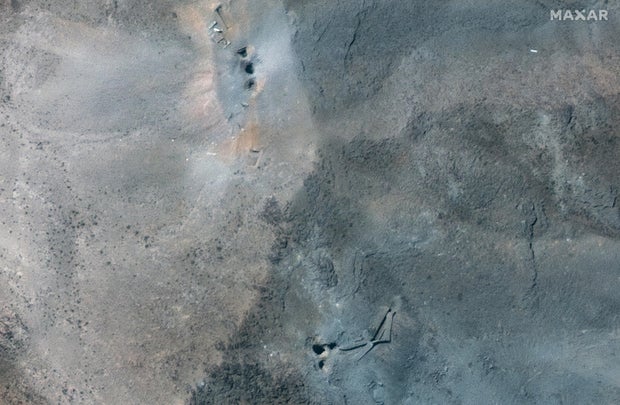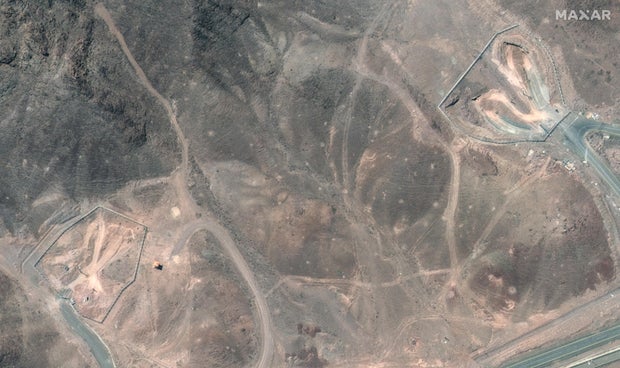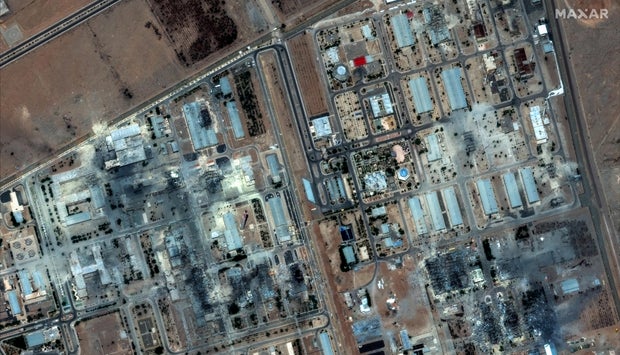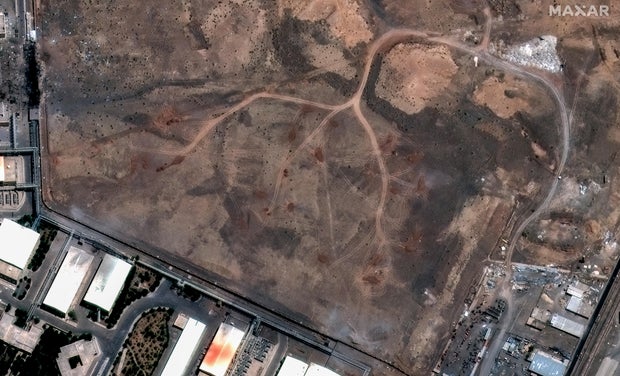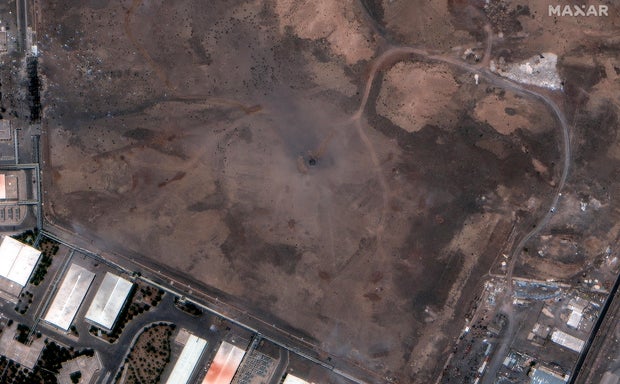New satellite photos show the aftermath of the U.S. military strike that dropped multiple 30,000-pound “bunker-buster” bombs on Iran’s Fordo nuclear facility and hit two other key locations in Iran’s nuclear program.
The stealth U.S. mission, dubbed “Operation Midnight Hammer,” struck three nuclear facilities in Iran — Fordo, Natanz and Isfahan — in the early hours of Sunday local time.
Gen. Dan Caine, the chairman of the Joint Chiefs of Staff, said at a Pentagon briefing Sunday that seven B-2 Spirit bombers each carried two of the bombs known as GBU-57 Massive Ordnance Penetrators, or MOPs. Over 25 minutes, a total of 14 MOPs were dropped on two target areas at Fordo and Natanz, while Tomahawk missiles from a U.S. submarine targeted the Isfahan site, he said.
He said it was the first time those massive bombs have ever been used in an operation.
“Final battle damage will take some time, but initial battle damage assessments indicate that all three sites sustained extremely severe damage and destruction,” Caine said.
Satellite photos show impact of strikes on Fordo
Satellite images from Maxar Technologies, taken Sunday after the strikes, show damage to the mountainside where the underground nuclear site at Fordo is buried about 300 feet down. They can be compared to images of the same location taken before the strikes.
Satellite image ©2025 Maxar Technologies
Satellite image ©2025 Maxar Technologies
A layer of ash caused by the airstrikes can be seen across a large swath of the area.
The images by Maxar show several large diameter holes or craters on the top of the ridge over the underground complex.
Satellite image ©2025 Maxar Technologies
Additionally, several of the tunnel entrances that lead to the underground facility appear blocked by dirt following the strikes.
Satellite image ©2025 Maxar Technologies
Satellite image ©2025 Maxar Technologies
Asked at the briefing whether any of Iran’s nuclear capability remains, Caine said, “I think (battle damage assessment) is still pending, and it would be way too early for me to comment on what may or may not still be there.”
Iran has yet to offer a damage assessment of the site. The United Nation’s International Atomic Energy Agency said in a social media post that it had seen “no increase in off-site radiation levels” in the wake of the U.S. strikes.
Craters, destroyed buildings in Isfahan and Natanz
At Isfahan, which was targeted by about a dozen Tomahawk missiles, satellite images from Sunday show extensive building damage across the facility, compared to images taken June 16. The Israeli military had also heavily bombed Isfahan in recent days.
Satellite image ©2025 Maxar Technologies
Satellite image ©2025 Maxar Technologies
At the Natanz uranium enrichment facility, a satellite image captured Sunday by Maxar shows an approximately 5.5-meter diameter hole or crater in the dirt directly over part of the underground military complex.
Satellite image ©2025 Maxar Technologies
Satellite image ©2025 Maxar Technologies
Natanz had been previously damaged by the first Israeli strikes on Iran on June 13.
U.S. military used decoys and deception in attack
President Trump announced Saturday evening that the U.S. had launched strikes against Iran. He said in a national address later Saturday night that the sites “have been completely and totally obliterated.”
Secretary of Defense Pete Hegseth said Sunday that the U.S. used decoy B-2 bombers, which flew west over the Pacific from their base in Missouri earlier Saturday, to throw off the Iranians from the true plans. The bombers actually involved in the strike took off on an eastward path, refueling several times on their way to the Middle East.
Hegseth added that the U.S. used other methods of deception to protect the B-2 bombers that dropped the 14 “bunker-buster” bombs. He said the tactics helped the U.S. drop the bombs without tipping off Iran’s fighter jets or its air missile systems.
“Our B-2s went in and out … and back without the world knowing at all,” Hegseth said. “In that way, it was historic. A strike that included the longest B-2 Spirit bomber mission since 2001, and the first operational employment of the MOP, a Massive Ordnance Penetrator.”




